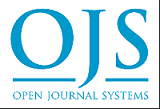Effects of nesting and murottal Al-Qur’an on vital sign change in infants with low birth weight
DOI:
https://doi.org/10.33024/minh.v7i7.491Keywords:
Infants, Low Birth Weight (LBW), Murrotal Al-Qur'an, Nesting, Vital SignsAbstract
Background: A comfortable position, touch, soothing sound sensory will produce a neuroligic response that will make the infant feel relaxed, calm and can help in the stability of physiological functions of infants with low birth weight.
Purpose: To determine effectiveness of nesting and murottal Al-Qur'an on vital sign change in infants with low birth weight
Method: Samples were divided into two groups infants with low birth weight in stable conditions, 15 infants with low birth weight were listened to the murottal Qur'an by using meli's nesting for 45 minutes daily for 3 days, the murottal Qur'an was listened to with a noise level of 50-65dB. 15 infants of control group have not any intervention, the measurements of vital signs were carried out toward control and intervention group before and after the intervention.
Results: Analysis of wilcoxon test showed that significance in vital signs only occurred in changes in oxygen saturation with a value of α = 0.006 (significance of α < 0.05), the heart rate, respiratory rate, and body temperature experienced changes in numbers which all led to normal values of the physiological condition of infants with low birth weight.
Conclusion: The use of meli's nesting and murottal Qur'an is combined therapy to newborns which is able to improve the physiological function of low birth weight infants seen through their vital signs.
References
Aita, M., Johnston, C., Goulet, C., Oberlander, T. F., & Snider, L. (2013). Intervention Minimizing Preterm Infants’ Exposure to NICU Light and Noise. Clinical Nursing Research, 22(3), 337–358. https://doi.org/10.1177/1054773812469223
Al-Kaheel, A. (2011). Al-Quran The Healing Book. Tarbawi Press.
Bieleninik, Ł., Ghetti, C., & Gold, C. (2016). Music therapy for preterm infants and their parents: A meta-analysis. Pediatrics, 138(3). https://doi.org/10.1542/peds.2016-0971
Byrne, E., & Garber, J. (2013). Physical therapy intervention in the neonatal intensive care unit. Physical and Occupational Therapy in Pediatrics, 33(1), 75–110. https://doi.org/10.3109/01942638.2012.750870
Cutland, C. L., Lackritz, E. M., Mallett-Moore, T., Bardají, A., Chandrasekaran, R., Lahariya, C., Nisar, M. I., Tapia, M. D., Pathirana, J., Kochhar, S., & Muñoz, F. M. (2017). Low birth weight: Case definition & guidelines for data collection, analysis, and presentation of maternal immunization safety data. Vaccine, 35(48), 6492–6500. https://doi.org/10.1016/j.vaccine.2017.01.049
Damayanti, D. S., Ismail, D., & Warsiti, W. (2018). the Effect of Listening To Murottal Qur’an on the Oxygen Saturation Level in Preterm Infants in the Neonatal Intensive Care Unit. Belitung Nursing Journal, 4(5), 457–461. https://doi.org/10.33546/bnj.365
Deviana, M. (2020). Combination of Polyethylene Terephthalate Nest- ing and Prone Position at the Standard Box Care to the Vital Signs and Length of Stay on the Low Birth Weight Babies. 4(1), 21–26. https://doi.org/10.35898/ghmj-41269
Hockenberry, M. J., Wilson, D., & Rodgers, C. C. (2021). Wong's essentials of pediatric nursing-e-book. Elsevier health sciences.
Hutchinson, E. A., De Luca, C. R., Doyle, L. W., Roberts, G., Anderson, P. J., & Victorian Infant Collaborative Study Group. (2013). School-age outcomes of extremely preterm or extremely low birth weight children. Pediatrics, 131(4), e1053-e1061.
Jabraeili, M., Sabet, T., Gharebaghi, M.M, Jafarabadi, M.A, & Arshadi, M. (2016). The Effect of Recorded Mum’s Lullaby and Brahm’s Lullaby on Oxygen Saturation in Preterm Infants: a Randomized Double-Blind Clinical Trial. Journal of Caring Sciences, 5(1), 85–93. https://doi.org/10.15171/jcs.2016.009
Jeyabarathi, K., & Shalini, N. (2018). Effectiveness of Nesting on Posture and Motor Performance Among High Risk Newborn. International Journal of Advanced Research, 6(11), 1103–1106. https://doi.org/10.21474/ijar01/8099
Kahraman, A., Başbakkal, Z., Yalaz, M., & Sözmen, E. Y. (2018). The effect of nesting positions on pain, stress and comfort during heel lance in premature infants. Pediatrics and Neonatology, 59(4), 352–359. https://doi.org/10.1016/j.pedneo.2017.11.010
Lissauer, T., Fanaroff, A. A., Miall, L., & Fanaroff, J. (Eds.). (2020). Neonatology at a Glance. John Wiley & Sons.
May, K.A., & Ma Himesh, L. R. (2014). Maternal dan Neonatal Nursing Family Centered Care (4rd editio). JB Lippincott, Co.
Ministry of Health of the Republic of Indonesia (2018). Hasil Utama Riset Kesehatan Dasar. Kementerian Kesehatan Republik Indonesia, 1–100. Retrieved from: https://kesmas.kemkes.go.id/assets/upload/dir_519d41d8cd98f00/files/Hasil-riskesdas-2018_1274.pdf
Mirghafourvand, M., Shafaie, F. S., Charandabi, S.M.A, & Jabbari, B. (2016). Effect of vocalization of the holy quran with and without translation on pregnancy outcomes: A randomized clinical trial. Iranian Red Crescent Medical Journal, 18(9). https://doi.org/10.5812/ircmj.35421
Pineda, R., Guth, R., Herring, A., Reynolds, L., Oberle, S., & Smith, J. (2017). Enhancing sensory experiences for very preterm infants in the NICU: An integrative review. Journal of Perinatology, 37(4), 323–332. https://doi.org/10.1038/jp.2016.179
Porges, S. W., Bazhenova, O. V., Bal, E., Carlson, N., Sorokin, Y., Heilman, K. J., Cook, E. H., & Lewis, G. F. (2014). Reducing auditory hypersensitivities in autistic spectrum disorder: Preliminary findings evaluating the listening project protocol. Frontiers in Pediatrics, 2(AUG), 1–10. https://doi.org/10.3389/fped.2014.00080
Trihono, P. P., Windiastuti, E., Pardede, S. O., Endyarni, B., & Alatas, F. S. (2013). Pelayanan Kesehatan Anak Terpadu. Departemen Ilmu Kesehatan Anak FKUI-RSCM, Jakarta.
Qolizadeh, A., Myaneh, Z. T., & Rashvand, F. (2019). Investigating the effect of listening to the Holy Quran on the physiological responses of neonates admitted to neonatal intensive care units: A pilot study. Advances in Integrative Medicine, 6(4), 159–162. https://doi.org/10.1016/j.aimed.2018.08.004
Rajalakshmi, A., Sunitha, K. A., & Venkataraman, R. (2019). A survey on neonatal incubator monitoring system. Journal of Physics: Conference Series, 1362(1). https://doi.org/10.1088/1742-6596/1362/1/012128
Saprudin, N., & Sari, I. K. (2018). Pengaruh Penggunaan Nesting Terhadap Perubahan Suhu Tubuh Saturasi Oksigen Dan Frekuensi Nadi Pada Bayi Berat Badan Lahir Rendah di Kota Cirebon. Jurnal Ilmu Kesehatan Bhakti Husada: Health Sciences Journal, 9(2), 16–26. https://doi.org/10.34305/jikbh.v9i2.63
Standley, J. (2012). Music Therapy Research in the Nicu An Updated Meta-analysis. 31(5), 311–316.
United Nations Children's Fund. (2004). Low Birth Weight Country Regional and Global Estimates.
Vaghefi, M., Nasrabadi, A. M., Golpayegani, S. M. R. H., Mohammadi, M. R., & Gharibzadeh, S. (2015). Spirituality and brain waves. Journal of Medical Engineering and Technology, 39(2), 153–158. https://doi.org/10.3109/03091902.2014.1001528
Downloads
Published
How to Cite
Issue
Section
License
Copyright (c) 2024 Malahayati International Journal of Nursing and Health Science

This work is licensed under a Creative Commons Attribution-ShareAlike 4.0 International License.









